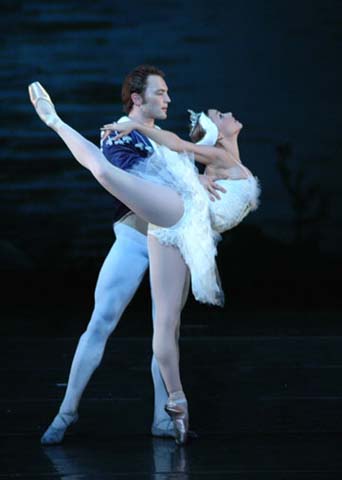|

Ballet is a form of dancing performed for theatre audiences.
Like other dance forms, ballet may tell a story, express a mood, or simply reflect the music. But a ballet dancer's technique
(way of performing) and special skills differ greatly from those of other dancers. Ballet dancers perform many movements that
are unnatural for the body. But when these movements are well executed, they look natural.
Ballet dancers seem to ignore the law of gravity as they float through
the air in long, slow leaps. They keep perfect balance while they spin like tops without becoming dizzy. During certain steps,
their feet move so rapidly that the eye can hardly follow the movements. The women often dance on the tips of their toes (Pointe),
and the men lift them high overhead as if they were as light as feathers.
The art of Ballet can
trace its origins to the early seventeenth century, when dancers performed to entertain audiences between scenes of an opera.
These short dances grew in popularity and importance until they became a form of theater in their own right, accompanied by
a standardization of movements and defining of other stylistic conventions. In 1661, King Louis XIV of France founded the
Académie Royale de Musique et de Danse, establishing Paris as the center of academic ballet. Italian dancers also developed
their own styles and approaches to the dance, and both schools flourished throughout the 18th and early 19th centuries. As
the years passed, Russia became the international center of ballet, combining the strength and passion of Italian style with
the softness and fluidity of the French school.
|
